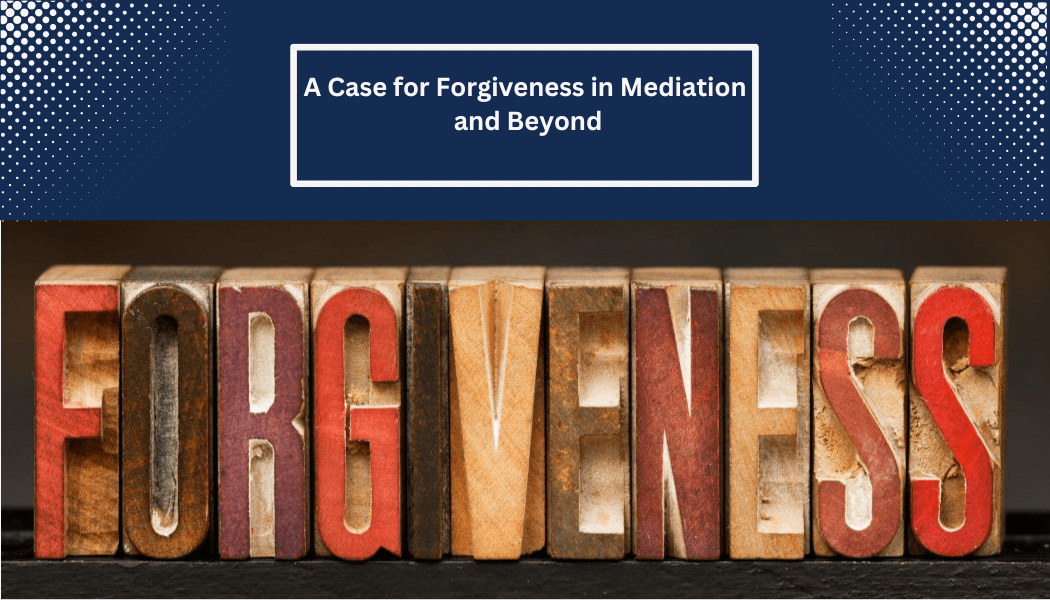I recently conducted a Webinar interview with Sriram Panchu, one of India’s leading mediators, on his experience using “virtual” mediation during the Covid-19 shutdown in his country. Mr. Panchu was quick to correct my terminology, suggesting that he refers to his current mediation practice as “enhanced mediation,” given the added value of technology. He said the phrase is also suggestive of a higher quality of communication in his mediations. He bluntly concluded, “I’m never going back to mediating in person.”
While other mediators have found much to laud about their virtual practices, others long for the days of face-to-face contact and in-person mediation. They wistfully recount stories of long days, shared food and emotional exchange. So what does our collective mediation experience, across cultures and disputes, portend for the future of our profession? What will our profession look like in a post-pandemic world? Will there be a gradual return to more traditional processes, or will the gravitational pull toward a virtual world be too tempting to resist?
Many articles and experienced mediators offer ‘how to” guides on improving the quality of virtual communication and enhancing more meaningful connection with those participating in virtual mediation. Their implicit message is that virtual mediation is here to stay and, like it or not, we must find ways to make the necessary accommodations. Yet, they skirt these threshold questions: What should the appropriate role be for technology as a mediation enhancing tool? And, should we prepare to summarily discard, along with neckties and high heels, what has evolved fundamentally as a human intervention, as we strive for even greater efficiency in remote deal making?
Appreciating the ease and benefits of virtual mediation
There can be little doubt that the almost overnight shift to virtual mediation has introduced both mediators and clients alike to the ease and benefits of remote dispute resolution. The internet is rife with anecdotal reports of more disputants being able to participate from afar, feeling safe in their chosen environment, and often able to reach agreement in record time. Mediators, meanwhile, offer similarly positive experiences of feeling invited into someone’s home, as they observe the background of trophies, photographs and memorabilia on display. They speak of the human element of seeing young children and pets filtering through, as they peek into people’s lives and forge connections they never thought possible through technology.
Zoom fatigue
Yet many mediators complain of “Zoom fatigue,” as they tax their brain’s attention span. They struggle to process the visual overload offered by the Brady Bunch-like gallery views or “team vision” created by a single camera in a crowded conference room. Still others complain of the disconnect between sight and sound, as they work to maintain eye contact or process social cues. What was once unconscious social interaction, and taken for granted, has now become the object of great focus and attention.
Is this an opportunity to hit reset?
Experiences aside, the one thing we can say with certainty is that at some point in the hopefully not-too-distant future, the pandemic fog will lift, and we will need to confront our current situation head-on. Not since the beginning of our still nascent profession have we been presented with such a unique opportunity to recalibrate our professional image and lives. This opportunity to hit reset, while thoughtfully considering the lessons of the pandemic, should not be taken lightly. Much like the pandemic itself, it may present a generational opportunity for accommodation and change.
I liken this discussion, only on a much larger scale, to the historical debate in our profession about whether mediators should favor in-person joint sessions or alternatively, begin in private sessions. I’ve always approached this question as a false dichotomy and suggested that the only wrong answer is the one that is not well considered, thoughtful and strategic. Moreover, whatever the answer, it must be one that conforms to the needs, interests and expectations of the participants. And, importantly, the mediator’s years of experience and knowledge must count for something, as he or she is uniquely positioned to offer process based suggestions. In the past, these robust conversations, more often than not, put us on the path toward an appropriate process. And when things didn’t work out as planned, we were open minded enough to reverse course and find a more productive path forward.
The future will have room for both
I believe that the future will have room for both virtual and in-person mediation. Mediators will need to prepare for an intellectually honest, process-based exchange, in order to help the parties in dispute choose between virtual or in-person mediation. This discussion must be founded in experience, true to our commitment to the integrity of the process and, most important, reflect the needs of the participants. Along the way, we must be wary of our own default settings or other impulses pushing us to agree to a process choice, based on what’s most comfortable or convenient.
What considerations should factor into a virtual or in-person decision?
As a starting point for any discussion, mediators should help the parties consider the following:
- Type of dispute. Larger, multiparty cases may be more effectively handled in person, while smaller disputes may be just as effectively handled virtually.
- Depth of emotion and the importance of repairing relationships. The deeper the connection between the parties in dispute and the greater the imperative to rebuild trust and collaboration, the more important it will be to consider a face-to-face process.
- Environmental considerations. Virtual mediation can be used as a means to minimize travel and reduce the carbon footprint of the mediation. How important is this to the participants? The “Mediators Green Pledge” offers guidance.
- Hybrid approach. The process options are not binary and may be modified to gain the best attributes of virtual and face-to-face mediation.
Again, there will come a day when mediators and clients will be presented with a choice: “Will we conduct this process in person or employ technology to create a virtual mediation?” When that day comes, it will be incumbent on all of us to be prepared to guide the conversation with a balanced understanding of the benefits and limitations of each, against the backdrop of the specific dispute, and the unique needs of the individuals involved.
We know that a virtual experience often allows for broader participation, a lower stress level for everyone involved, and statistically speaking, a meaningful chance for a successful conclusion. Yet for many of us drawn to mediation as a process requiring human intervention, the jury is still out on the question of trust and connection. Can a deep psychological connection be forged on screen, where two people can feel seen, heard and valued to the same degree as sitting across the table from each other? Is a deeper connection even necessary, when our virtual experience suggests we’ve been able to go “deep enough” to permit resolution, however that’s defined?
For many mediators, there will be an overwhelming temptation to embrace the success of our virtual experiment and continue on that trajectory. For others, the pendulum will swing back, and they will find a balance between a virtual and in-person practice. There is no right or wrong answer, only an equilibrium, waiting to be found. Just like other aspects of the mediation process, the best mediators will be those who are able, through self-reflection, curiosity and gentle stewardship, to guide others in conflict to the right process for them. The future of our profession will be shaped by how we respond to this moment.





